Paddling Paradise: Kayaking the Colorado River
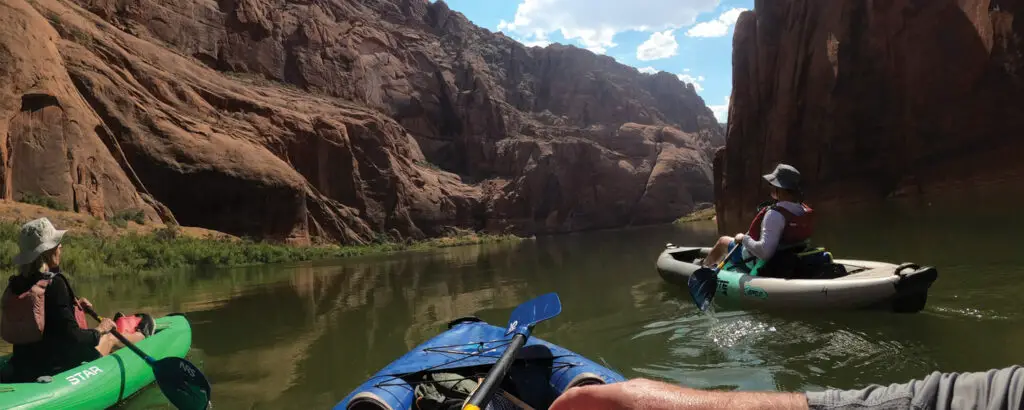
In the middle of the Arizona desert, just south of the Utah border, lies a paddler’s paradise. Deep in a sandstone canyon that starts at Lake Powell and ends in the Grand Canyon, the Colorado River twists and turns across the rugged landscape. On the surface, hundreds of feet above the canyon floor, the surrounding desert offers little. Its unforgiving land parched from a lack of rain. Despite a few towering red cliff walls that steal a few moments of your imagination, there isn’t much of interest here… at least until you arrive at Lee’s Ferry.
Once at the Colorado River’s edge, the despair of the surrounding landscape fades and something else entirely appears. The abundance of water welcomes your weary, desert-traveling soul just as it has for generations before. The river brings hope and possibility to an otherwise barren land. Plucked from the depths of Lake Powell, the Colorado runs at a consistent 48 degrees Fahrenheit, providing refuge from the 110+ degree summer air temperatures in the area. Providing 40 million people with water, this marble-colored canyon is the conduit that brings life to the surrounding southwestern states.
But beyond serving as a lifeline to so many in the Southwest, the stretch of the Colorado between Glen Canyon Dam and Lee’s Ferry is a playground for so many others. Each day, both fishermen and paddlers head out on these waters. Anglers try their luck at catching brown and rainbow trout in its cool tailwaters. Paddlers, a balanced mix of kayakers and paddleboarders, line up to be hauled upstream to spend the day drifting back to where they started.
I have fly-fished and camped in this area for years. As an Arizona resident, Lee’s Ferry is one of my favorite trout fisheries. At more than 4 hours away, I don’t get there as much as I wish, but even when I can’t make the drive I dream about the experience here. Fly fishing in a large, cool river while surrounded by red canyon walls is as good as trout fishing gets in Arizona.
Until recently, I’d never had the chance to experience the river from a kayak or paddleboard. Decades ago I was invited along on a rafting trip through the Grand Canyon. We had started that 7-day trip at this exact spot at Lee’s Ferry, but we headed downstream into the Canyon – something that requires an elusive permit to do. For those who want to experience the river without a permit, the 15-mile stretch of water between the dam and Lee’s Ferry is for you.
Kayaking the Colorado
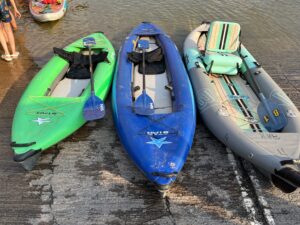
For around $75 per person, one of the backhaul service operators will load you, your kayak or paddleboard, and your gear on a boat and haul you upriver. Once you arrive at your choice of drop-off spots, you paddle (or float if you prefer) downriver until you return to Lee’s Ferry. Besides the cool water and the amazing scenery, the beauty of paddling this stretch of the river is that you can customize the trip to your liking. You can choose to paddle the full 15-mile stretch in a day or do 10 miles in half a day. With a couple of campgrounds on the banks of the river, you can even maximize your time on the river and make your trip into a multi-day excursion. Kayaks and paddleboards can be rented by the backhaul operators – typically at around $35/day for a single kayak or paddleboard and $55 for a double kayak. Due to a limited number of spots on each backhaul boat, reservations are necessary and should made at least a few weeks in advance if possible. We booked backhaul service and kayak rentals through Kayak Horseshoe Bend on our recent trip and appreciated their professionalism and knowledge of the river.
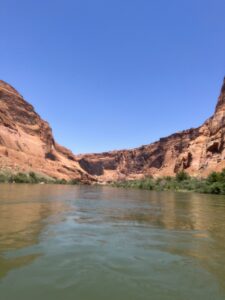
After picking up the backhaul boat in Lee’s Ferry, and starting your journey upriver, you’ll need to decide at which point you’d like to be dropped off at. For a full day of paddling or for an overnight trip with camping, you’re drop-off point will be just below Glen Canyon Dam – a 15-mile trip. For shorter half-day trips, you can choose to be dropped off just upriver from the famous Horseshoe Bend, which is a 10-mile trip back to Lee’s Ferry. For the most part, the entire 15-mile length looks about the same from the water. Paddling along the river you’ll pass in and out of shadows created by the thousand-foot-tall sheer red canyon walls on either side of you. Without any rapids along the route, the water is calm for the entire journey, making it perfect for visitors of all ages and skill levels. While kayaking the Colorado may be a consistent experience from start to finish, it is one of the most beautiful and special places you’ll ever encounter. There is something magical about this canyon, and while this stretch is overshadowed by its bigger canyon brother downstream, kayaking this stretch of water will leave you with memories that you’ll draw back on for the rest of your life. It is that special of a place.
Points of Interest:
During the 15-mile trek, there are some points of interest to check out:
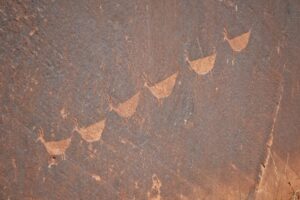
- Glen Canyon Dam (Mile 15) – If you choose to paddle the full 15-mile route from Glen Canyon Dam back to Lee’s Ferry, you’re backhaul boat will drop you just behind the Dam. It’s interesting to be able to see the backside of the concrete dam that created one of the largest man-made reservoirs in the US, Lake Powell.
- Petroglyph Beach (Mile 10) – a short hike from the river’s edge leads you to view ancient rock art on the canyon wall. Archaeologists believe the petroglyphs here are between 3,000 and 6,000 years old and the area contains two elements of rock art representing three separate temporal and cultural periods.
- Horseshoe Bend (Mile 9) – While Horseshoe Bend is better experienced from above, it’s pretty cool to be one of the small dots floating downriver making those at the lookout above jealous. More than 2 million people visit Horseshoe Bend each year, but you are one of the view able to experience it from the water.
- Waterholes Canyon (Mile 4) – Park your kayak and hike up the Waterhole Canyon to see one of the area’s top slot canyons. Make sure to leave some time in your schedule to experience this.
- Overnight Campsites (throughout) – There are 5 primitive campsites between Glen Canyon Dam and Lee’s Ferry. Each site offers first-come, first-served campsites with a fire ring and bathrooms. Take your time in the canyon and spend a night or two along your kayaking journey.

Whether you plan on camping for a few days, hitting all of the points of interest, or letting them pass by on your beeline to Lee’s Ferry, it’s important to know that you have options to add to your trip.
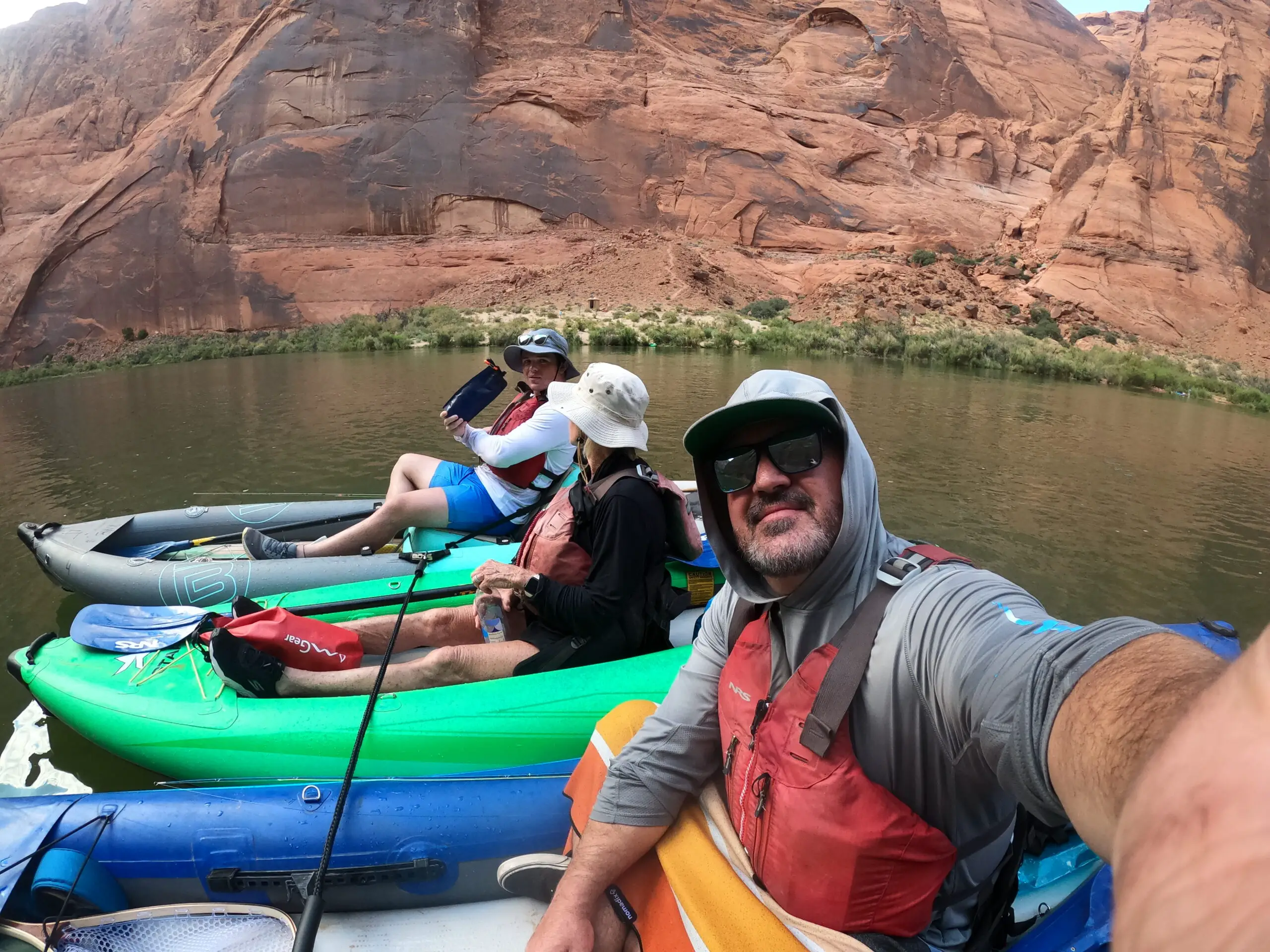
A Full Day of Beauty, Fun, and Wonder
When we recently kayaked this route, we chose the tackle the full 15-mile paddle and were dropped just below the dam. Expecting a quick taxi to our drop-off spot, we were surprised that our boat driver stopped numerous times along the trip upriver to point out wildlife and points of interest. While the information was appreciated, the stops along the way affected our schedule. Due to booking late, the earliest backhaul boat we could get our group of 3 on was at 10:45 am. The slow trip upriver meant that we didn’t get into our kayaks until 12:30 pm – much later than we had expected.
Despite starting our trip later in the day, we headed our trek downriver and quickly found ourselves paddling with our mouths wide open. The canyon is gorgeous – with countless shades of red, orange, and brown littering the steep canyon walls. A trip like this is filled with contrasts. The red canyon abruptly meets the green water. The 100+ degree heat is in opposition to the 50-degree river. Absolute silence fills the canyon one minute only to be interrupted by the absurdly loud roar of a boat the next.
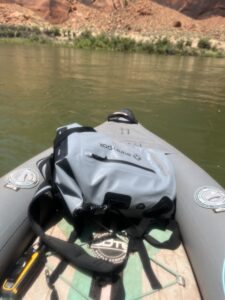
Kayaking the Colorado River is something we think everyone should try at least once. This bucket-list item won’t leave you disappointed. The calm cool waters on the route make the trip both feasible for all ages and tolerable during the brutal summer heat. Paddle on your own terms. Put your paddle down, sit back, and watch the canyon details pass you by for hours. Or dig in, raise your heart rate, and race to see who can get to Lee’s ferry first. No matter how you choose to do this trip, you’ll remember it for years.
We had heard that the last couple of miles “can get old” and that the “canyon kind of all looks the same”, but we took in every minute and each paddle and recognized it as a privilege. When traveling the Colorado by kayak, you are one of the lucky few to see this part of the world from this perspective – to drink in the rich, red canyons and recognize how special this place is.
What to bring
In anticipation of our trip kayaking the Colorado, we picked up a few helpful items on Amazon that served us well on this trip:
Dry bag – Being on the water all day, your stuff is bound to get wet. Keep all of your gear, clothing, and electronics, safe from the water by packing it all in a dry bag. We had heard good things about the Earth Pak brand and purchased their 10L dry bag and their 35L Backpack dry bag. Both dry bags served us well and kept our stuff protected, but we especially loved the flexibility of the backpack bag. If you’re gonna pick up a new dry bag, treat yourself to the larger (35L0 backpack version.
Collapsible water bottle – If you’re only going to bring one thing along when kayaking the Colorado, choose water – and lots of it. In the summer, temperatures in the canyon can reach well over 100 degrees and the sun can be relentless. Kayak Horseshoe Bend recommends bringing at least 1 gallon of water per person in the summer. Rather than lugging along rigid and heavy water containers for our trip, we picked up more flexible, collapsible water containers to hold all of our water. Flexible water bottles sit better in the floor of your kayak and when they are empty, can be stowed away easily in your dry bag to save space. Vapur’s 1L collapsible water bottles worked great as our main water source throughout the day. We refilled them from a 3L Hydrapak Seeker water storage bag. We froze all of our water bags before the trip (another huge advantage of collapsible water bottles) giving us cold water throughout the day as the ice melted.
Soft Cooler – Depending on how long you’ll be on the water, you’ll need to pack provisions accordingly. Kayaking the Colorado is an experience that you should take your time and enjoy, so bringing along some food is important. No matter what’s on your menu of choice, a soft-sided cooler will sit well in your kayak throughout your trip and keep your food cold. We like the RTIC Soft Cooler to keep our lunch, snacks, and drinks cold in style.
Lightweight towel – Bringing along a towel is optional, but we highly recommend it. In 100+ degree heat, you probably won’t need the towel to dry off after getting out of the sub-50 degree water, but a towel will come in handy to cover up from the sun as the day wears on. We brought along both our Original Towel and Lightweight Towel from Nomadix and didn’t regret it. Nomadix towels are awesome for a variety of outdoor activities. They are lightweight, resist sand, and dry fast. We used them to cover our legs to prevent them from being sunburn. Splashing a bit of water on the towels also helped us cool down.
Waterproof phone case – Many newer phones are waterproof out of the box, but you’ll appreciate the peace of mind of protecting your phone with a waterproof case while kayaking the Colorado. Waterproof phone cases are inexpensive and worth every penny on a trip like this. Our Earth Pak dry bags each came with a phone case, but if you need to get some more, we recommend this 2-pack.
While there are some great products out there that can make kayaking the Colorado easier and more enjoyable, the great news is that you don’t need much more than a kayak or paddleboard to make this trip happen. No matter how you do it, just do it.
The Bottom Line
Kayaking the Colorado River is an amazing and special experience. We think it should be on everyone’s bucket list and if you can make it happen, you should. The gentle flow of the river sends you through up to 15 miles of a canyon that literally becomes the Grand Canyon just downriver.
If you do choose this adventure, the great folks at Kayak Horseshoe Bend will take great care of you, and with a ton of great info on their website – you can begin planning now. Whether to choose to rent a kayak or bring your own, invite some friends and family, pick up some new gear and be ready for an experience you won’t soon forget.
Happy Paddling!





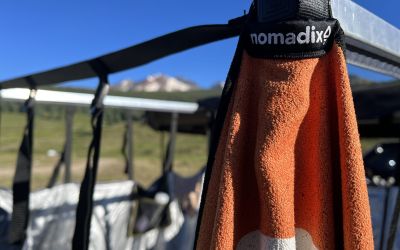
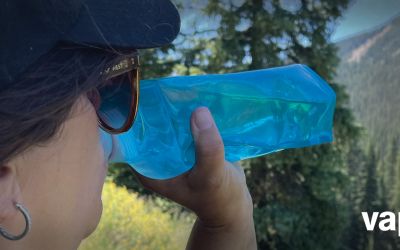
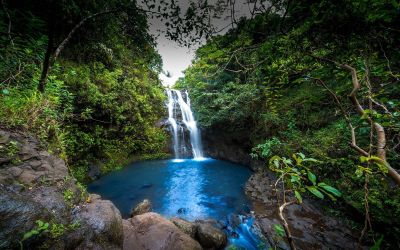
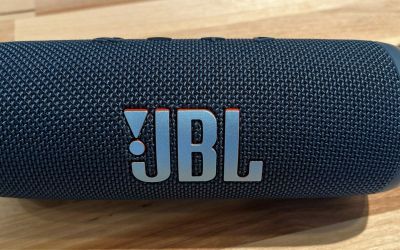
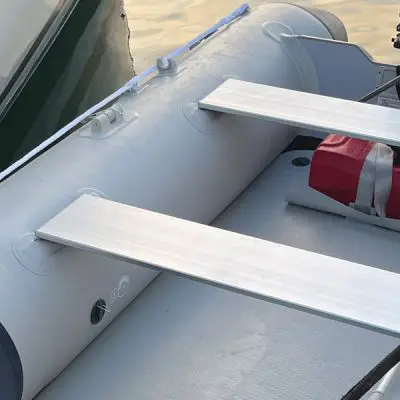
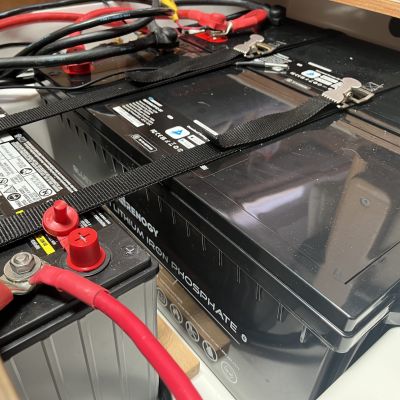
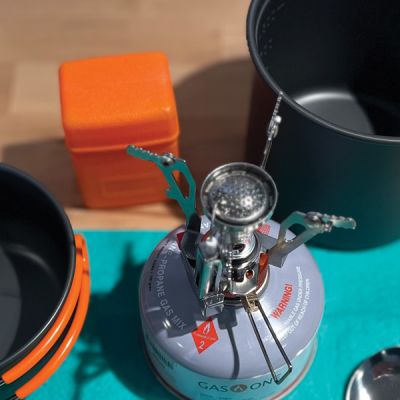
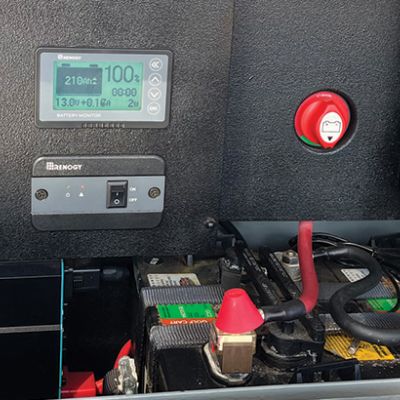
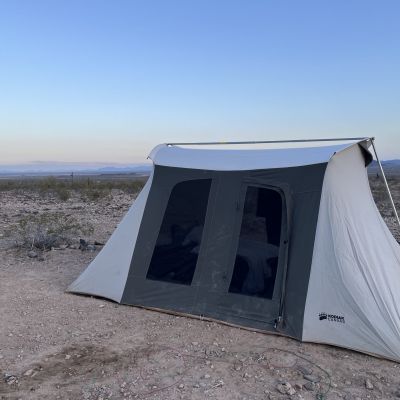
Leave a Reply